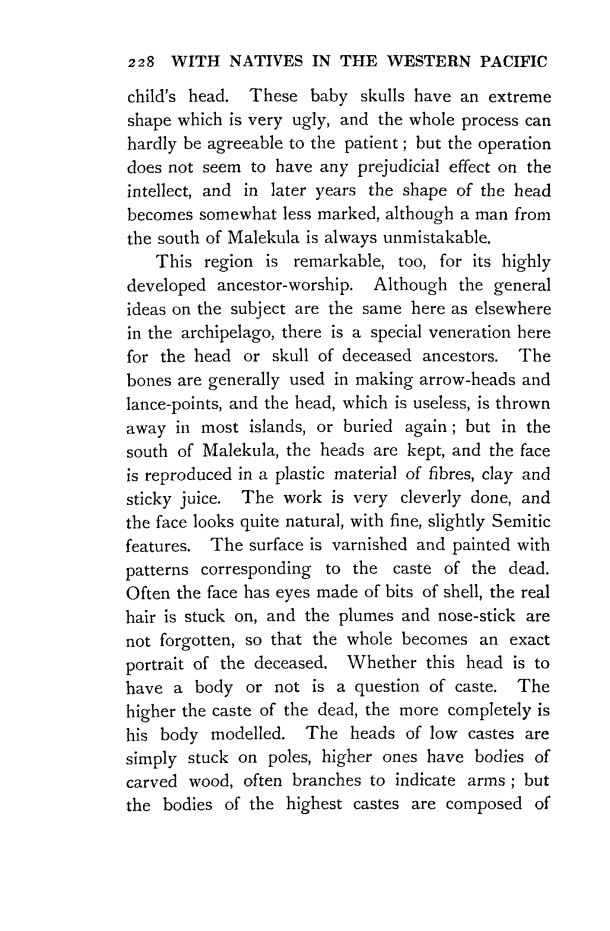|
|  [Note: this transcription was produced by an automatic OCR engine]
228 WITH NATIVES IN THE WESTERN PACIFIC
child’s head. These baby skulls have an extreme
shape which is very ugly, and the whole process can
hardly be agreeable to the patient ; but the operation
does not seem to have any prejudicial effect on the
intellect, and in later years the shape of the head
becomes somewhat less marked, although a man from
the south of Malekula is always unmistakable.
This region is remarkable, too, for its highly
developed ancestor-worship. Although the general
ideas on the subject are the same here as elsewhere
in the archipelago, there is a special veneration here
for the head or skull of deceased ancestors. The
bones are generally used in making arrow-heads and
lance-points, and the head, which is useless, is thrown
away in most islands, or buried again; but in the
south of Malekula, the heads are kept, and the face
is reproduced in a plastic material of fibres, clay and
sticky juice. The work is very cleverly done, and
the face looks quite natural, with fine, slightly Semitic
features. The surface is varnished and painted with
patterns corresponding to the caste of the dead.
Often the face has eyes made of bits of shell, the real
hair is stuck on, and the plumes and nose-stick are
not forgotten, so that the whole becomes an exact
portrait of the deceased. Whether this head is to
have a body or not is a question of caste. The
higher the caste of the dead, the more completely is
his body modelled. The heads of low castes are
simply stuck on poles, higher ones have bodies of
carved wood, often branches to indicate arms; but
the bodies of the highest castes are composed of
|